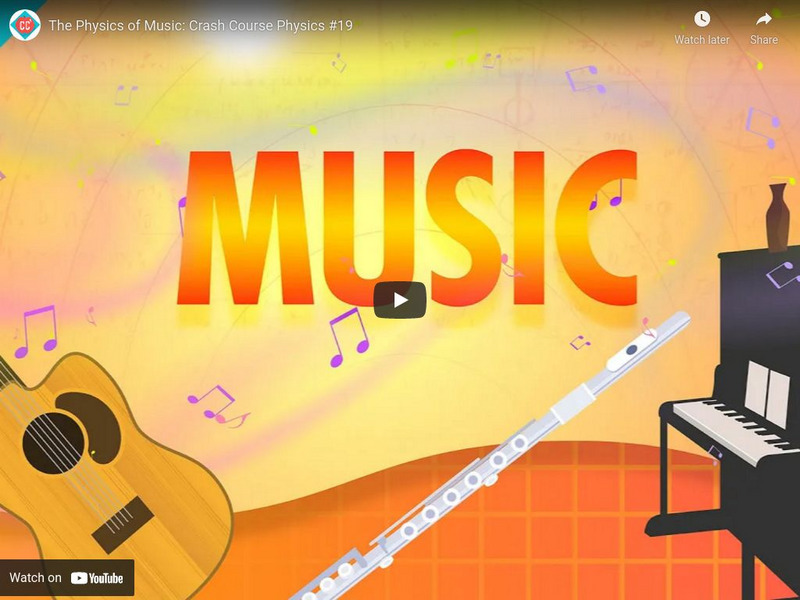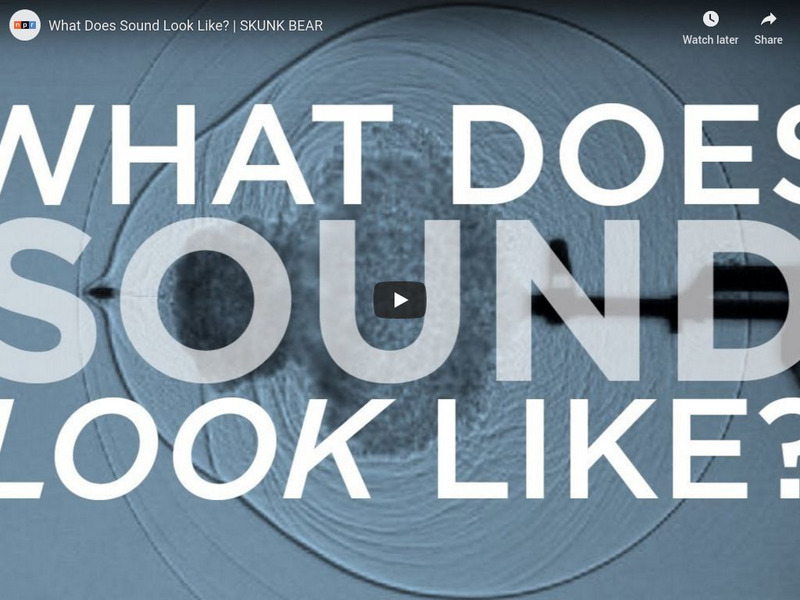Hi, what do you want to do?
Curated OER
Whirling Twirling Sound
Long, rippled, plastic tubes are swung around in circles, making air pass through them, and creating sound waves. This is a simple and inexpensive toy that you can let learners experiment with as they learn about sound and pitch. Go...
Steve Spangler Science
Buzzing Noise Maker - Sick Science! #044
Have your learners create noise makers using this video clip. Instructions are given for making a noisy toy with a craft stick, string, a rubber band, and double-sided sticky foam tape. This activity can kick off a discussion of sound...
Curated OER
MusicÕs True Form
The true form of music is explained in 45 seconds. Viewers will learn that it is enjoyed by people and is made up of sound waves. A short yet accurate description of music.
PBS
Pbs Learning Media: Sound Waves Underwater: True or False
This interactive quiz from the NOVA Web site features an array of interesting facts about the nature of sound underwater.
Khan Academy
Khan Academy: Production of Sound
A video explaining how a speaker produces sound by transporting energy through the medium. [3:45]
NeurOreille
Journey Into the World of Hearing: What Do I Hear?
An interactive exploration into the world of sound waves and other properties of sound.
PBS
Pbs Learning Media: Sound and Solids: Visualizing Vibrations
In this video segment, adapted from ZOOM, a tuning fork's vibrations are made visible as ripples in a bowl of water. [0:51]
PBS
Pbs Learning Media: Understanding Vibration and Pitch
This video segment presents a variety of sounds -- from animals to machines to musical instruments -- while introducing the basic concepts of vibration, volume, and pitch. [2:36]
PBS
Pbs Learning Media: Sound Waves Underwater: The Loch Ness Monster
This video segment, adapted from NOVA follows a team of enthusiasts and scientists who attempt to find a trace of the Loch Ness monster by scouring the lake with sonar. [5:24]
PBS
Pbs Learning Media: Sound and Solids: Listening Stick
This video segment, adapted from ZOOM, explores how sound waves travel differently through air than through solids like a yardstick, a baseball bat, and a golf club. [1:46]
OpenSciEd
Open Sci Ed: Unit 8.2 Sound Waves: Teacher Playlist
This teacher playlist demonstrates the Sound Waves unit investigations where the students investigate how sound travels.
OpenSciEd
Open Sci Ed: Unit 8.2 Sound Waves: Student Playlist
This student playlist demonstrates the Sound Waves unit investigations where the students investigate how sound travels.
PBS
Pbs Kids: Animations: What Is Sound?
Narrated animation that visually explains how an object vibrating produces sound. (30 secs) Uses QuickTime.
Bozeman Science
Bozeman Science: Harmonics
In this video Paul Andersen explains how the wavelength of a standing wave is determined by the boundary length and frequency of the wave. The fundamental frequency has a wavelength double the boundary length. Harmonics are built on the...
PBS
Wgbh: Peep and the Big Wide World: The Way Things Move: Sounds of Silence, Pt. 2
Discover sounds when Quack gives Chirp the silent treatment, and Chirp gets stranded in a puddle. [8:50]
Crash Course
Crash Course Physics #18: Sound
We learn a lot about our surroundings thanks to sound. What is sound? And how does it travel? And what is this Doppler Effect that we've heard so much about? In this video episode of Crash Course Physics, Shini goes over some of the...
Crash Course
Crash Course Physics #19: The Physics of Music
Music plays a big part in many of our lives. Whether you just like to listen or you enjoy playing an instrument, music is powerful. So what is music? How does it work? What are the physics of music? In this video episode of Crash Course...
Incorporated Research Institutions for Seismology
Iris: Reflection Seismology: Seeing Below the Ground
How do seismologists actually see the images in the layers of Earth below us? Find out in this video clip. [0:46]
The Kid Should See This
Tksst: Cymatics: Science and Music Equals Audio Frequency Visualizations
New Zealand musician Nigel Stanford showcases audio frequency visualizations in this music video. [5:52]
PBS
Pbs Learning Media: Sound and Solids: Stereo Hangers
This video segment, adapted from ZOOM, explores how sound waves travel differently through solids than through air, in this case, a metal clothes hanger. [1:14]
NPR: National Public Radio
Npr Videos: Skunk Bear: What Does Sound Look Like?
You can actually see sound waves as they travel through the air thanks to a clever photographic trick. [2:31]
Other
Online Tone Generator
Change the hertz, frequency, and volume with this online tone generator.
Khan Academy
Khan Academy: Beat Frequency
David explains what beat frequency means, how to find it, and solves a sample problem involving beat frequency. [11:48]
Khan Academy
Khan Academy: Standing Waves in Closed Tubes
Find out why you can make music by blowing into empty bottles. [9:57]






















